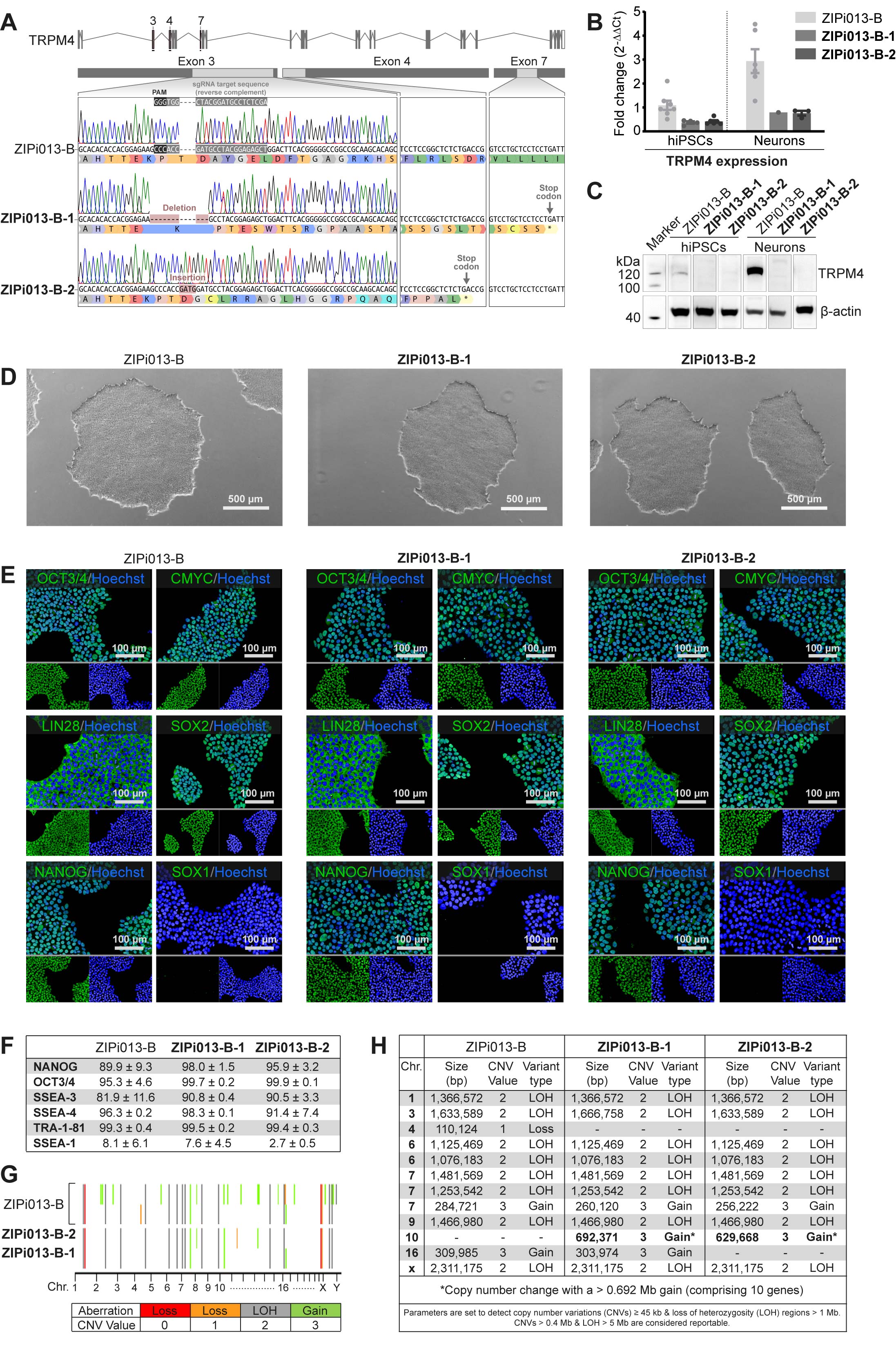BIHi257-A-1
ZIPi013-B-1
General
Cell Line |
|
| hPSCreg name | ZIPi013-B-1 |
| Cite as: | ZIPi013-B-1 |
| Alternative name(s) |
BIHi257-A-1
|
| Cell line type | Human induced pluripotent stem cell (hiPSC) |
| Similar lines | No similar lines found. |
| Last update | 13th December 2024 |
| User feedback | |
Provider |
|
| Generator |
Berlin Institute of Health (BIH)
Contact:
Berlin Institute of Health (BIH) |
| Owner | Fraunhofer Institute for Translational Medicine and Pharmacology ITMP (ITMP) |
| Distributors | |
| Derivation country | Germany |
External Databases |
|
| BioSamples | SAMEA116330756 |
General Information |
|
| Publications | |
| * Is the cell line readily obtainable for third parties? |
Yes Research use: allowed
Clinical use: allowed
Commercial use: allowed
|
| Subclone of | |
Donor Information
General Donor Information |
|
| Sex | female |
Phenotype and Disease related information (Donor) |
|
| Diseases | No disease was diagnosed.
|
Donor Relations |
|
| Other cell lines of this donor | |
External Databases (Donor) |
|
| BioSamples | SAMEA1087896 |
Ethics
Also have a look at the ethics information for the parental line
ZIPi013-B
.
| Is there an MTA available for the cell line? | No |
| For generation of the cell line, who was the supplier of any recombined DNA vectors or commercial kits used? | |
| Are you aware of any constraints on the use or distribution of the cell line from the owner or any parties identified in the query above? | No |
hIPSC Derivation
General |
|
|
The source cell information can be found in the parental cell line
ZIPi013-B.
|
|
Reprogramming method |
|
| Vector type | Non-integrating |
| Vector | Episomal |
| Genes | |
| Is reprogramming vector detectable? |
Unknown |
Vector free reprogramming |
|
Other |
|
| Selection criteria for clones | Morphology |
| Derived under xeno-free conditions |
No |
| Derived under GMP? |
No |
| Available as clinical grade? |
No |
Culture Conditions
| Surface coating | Matrigel/Geltrex |
| Feeder cells |
No |
| Passage method |
Enzyme-free cell dissociation
Gentle Cell Dissociation Reagent
|
| CO2 Concentration | 5 % |
| Medium | mTeSR™ Plus |
| Has Rock inhibitor (Y27632) been used at passage previously with this cell line? | No |
| Has Rock inhibitor (Y27632) been used at cryo previously with this cell line? | Yes |
| Has Rock inhibitor (Y27632) been used at thaw previously with this cell line? | Yes |
Characterisation
Analysis of Undifferentiated Cells
| Marker | Expressed | Immunostaining | RT-PCR | Flow Cytometry | Enzymatic Assay | Expression Profiles |
| POU5F1 (OCT-4) |
Yes |
|||||
| NANOG |
Yes |
|||||
| SOX2 |
Yes |
|||||
| SSEA-3 |
Yes |
|||||
| SSEA-4 |
Yes |
|||||
| TRA 1-81 |
Yes |
|||||
| SSEA-1 |
No |
Differentiation Potency
In vitro directed differentiation
Protocol or reference
10000003454-PIS_02.pdf
STEMdiff Trilineage Differentiation Kit
In vitro directed differentiation
| Marker | Expressed |
| BRACHYURY |
Yes |
Protocol or reference
10000003454-PIS_02.pdf
STEMdiff Trilineage Differentiation Kit
In vitro directed differentiation
Protocol or reference
10000003454-PIS_02.pdf
STEMdiff Trilineage Differentiation Kit
Microbiology / Virus Screening |
|
| Mycoplasma | Negative |
Genotyping
Karyotyping (Cell Line) |
|
| Has the cell line karyotype been analysed? |
Yes
|
Other Genotyping (Cell Line) |
|
| Is there genome-wide genotyping or functional data available? |
Yes
SNP typing array
See in section Karyotyping Method |
Genetic Modification
| Genetic modifications not related to a disease |
|



Login to share your feedback, experiences or results with the research community.